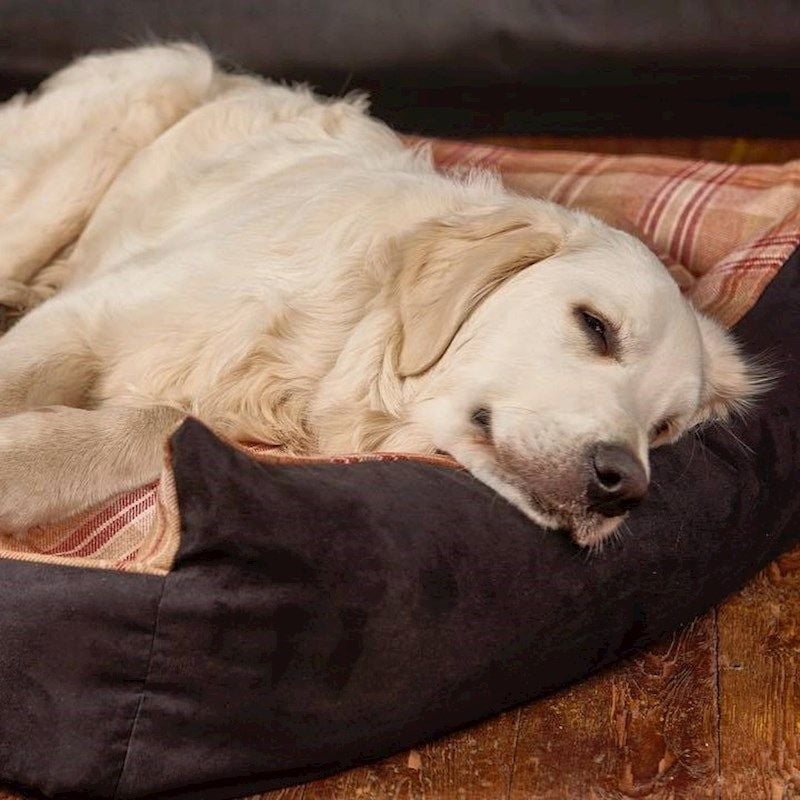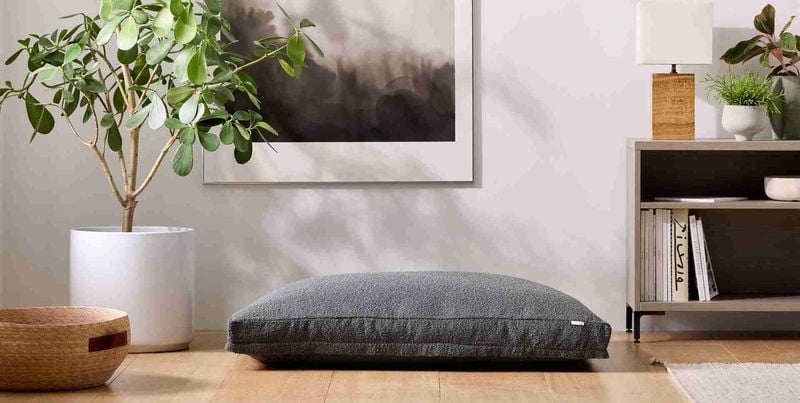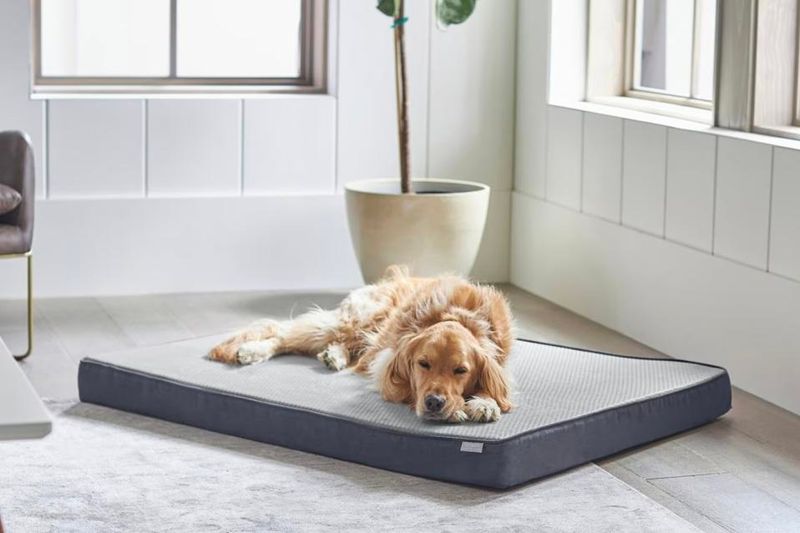9 Ways to Create the Perfect Sleeping Area for Your Dog
Every dog deserves a cozy place to rest and recharge. Creating the perfect sleeping area for your furry friend isn’t just about comfort – it’s essential for their health and happiness.
A good sleep spot helps reduce anxiety, prevents behavior problems, and gives your dog a sense of security in your home. Let’s explore how to make the ideal doggy dreamland that will have your pet snoozing in style!
1. Choose the Right Bed for Your Buddy
Your dog’s bed is their personal sanctuary. Consider your dog’s size, age, and sleeping style before making a purchase. Large breeds need spacious, supportive beds while smaller dogs often prefer snug, den-like options.
Older dogs benefit from orthopedic beds that cushion aging joints. Watch how your dog sleeps – curled up dogs enjoy round beds with raised edges, while sprawlers need flat, rectangular mattresses. Materials matter too!
Opt for washable covers and durable fabrics that resist chewing. Memory foam provides excellent support, while cooling materials help hot-natured pups stay comfortable during summer months.
2. Find a Peaceful Location Away From Traffic
Location is everything when setting up your dog’s sleep zone. Select a quiet corner away from household hustle and bustle – this helps your furry friend relax without constant disruptions.
Avoid high-traffic areas like hallways or near the front door where coming and going might startle them. Consider temperature variations throughout your home. Stay away from drafty spots near windows or doors, and keep the bed distant from heating vents that could make sleeping uncomfortable.
Many dogs appreciate having a wall or corner against their bed, creating a sense of security while they rest. This positioning satisfies their natural denning instincts.
3. Maintain a Spotless Sleeping Environment
Fresh bedding invites peaceful slumber for your four-legged friend. Wash your dog’s bed covers weekly to remove hair, dander, and the inevitable doggy odors that develop.
For beds without removable covers, a vacuum and spot cleaning work wonders between deep cleans. Rotate or fluff bedding materials regularly to prevent uncomfortable lumps and extend the life of the bed.
Some pet parents keep two sets of bedding, allowing for immediate replacement when one set needs washing. Don’t forget about the floor around the sleeping area!
A quick sweep or vacuum prevents dirt from migrating to clean bedding and reduces allergens that might disturb your pup’s rest.
4. Master the Temperature for Maximum Comfort
Dogs are sensitive to temperature changes, affecting their sleep quality dramatically. During winter months, position your pup’s bed away from drafty doors and windows.
Add a thermal pad beneath the bed or provide a self-warming mat for extra coziness when temperatures drop. Summer brings opposite challenges. Cooling mats work wonders for thick-coated breeds who overheat easily.
Elevated beds improve air circulation underneath, helping your dog regulate body temperature naturally. Remember that preferences vary by breed and age.
Puppies and senior dogs typically need warmer sleeping environments, while large or double-coated breeds often prefer cooler spots. Watch for signs of discomfort like excessive panting or shivering.
5. Add Your Scent for Extra Comfort
Dogs find tremendous comfort in their owner’s familiar smell. Place an old t-shirt or sweatshirt you’ve recently worn on your dog’s bed to create an instant sense of security.
The power of your scent works like a constant reminder that you’re nearby, even when you’re not physically present. This trick proves especially helpful for puppies adjusting to new homes or dogs with separation anxiety.
For maximum effectiveness, rotate items periodically as the scent naturally fades. Avoid washing these comfort items too frequently. Some clever pet parents keep a dedicated “comfort shirt” that they wear occasionally just for this purpose.
The familiar smell helps nervous dogs settle down faster at bedtime and sleep more soundly throughout the night.
6. Create a Dimly Lit Nighttime Haven
Lighting significantly impacts your dog’s sleep quality. Most dogs prefer sleeping in darkness or dim conditions, similar to their wolf ancestors who rested in dens. Bright lights can disrupt their natural sleep cycles, making it difficult for them to settle down.
Consider using blackout curtains in rooms where your dog sleeps, especially during summer months with extended daylight hours. For nighttime bathroom breaks, install a small night light nearby – enough illumination for safety without disturbing sleep.
Pay attention to electronic devices too. The blue light from TVs and computers can affect dogs just as it affects humans. If your dog’s bed sits in a media room, try to power down screens at least 30 minutes before expecting your pup to sleep.
7. Incorporate Favorite Toys for Security
A favorite toy transforms a simple bed into a personalized sanctuary. Select one or two special toys exclusively for bedtime – this creates positive associations with the sleeping area and provides comfort during the night.
Soft, squeak-free options work best to avoid midnight play sessions! For puppies and anxious dogs, heartbeat toys with warming features mimic the comfort of littermates.
These specialized toys can significantly reduce nighttime whining and restlessness. Rotate bedtime toys occasionally to maintain interest while preserving their special status.
Some dogs develop strong attachments to specific comfort objects. If your dog has a beloved toy they always bring to bed, make sure it stays clean but preserve the familiar scent that makes it special to them.
8. Honor Your Dog’s Personal Space
Dogs value having their own territory within your home. Teach children and visitors that your dog’s bed is their private sanctuary – a place they can retreat to without being disturbed.
This boundary creates trust and security for your four-legged family member. Avoid using the bed area for discipline or forcing your dog to go there as punishment. Their sleeping space should maintain purely positive associations.
When your dog is in their bed, consider it an invisible “do not disturb” sign unless they initiate interaction. Some dogs prefer multiple rest spots throughout the house.
This natural behavior allows them to stay near family while adjusting to different temperatures throughout the day. Respecting these preferences shows your dog you understand their needs.
9. Make Adjustments Based on Your Dog’s Feedback
Your dog communicates preferences through behavior – you just need to watch for the clues! If your pup constantly abandons their designated bed for the floor or furniture, something isn’t meeting their needs.
Perhaps they’re too hot, the bed is uncomfortable, or they prefer a different location altogether. Seasonal changes often require adjustments too. Many dogs seek cooler tile floors during summer months but need extra warmth in winter.
As senior dogs age, they develop different comfort needs, potentially requiring more padding or orthopaedic support. The perfect sleeping area evolves throughout your dog’s life.
Regular observation helps you fine-tune their space, ensuring they always have the restful haven they deserve. Remember – a well-rested dog is a happier, healthier companion!















